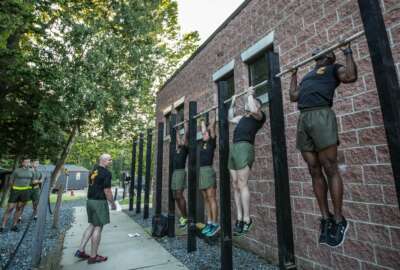What the FEVS says: It’s the work, stupid
The Federal Employee Viewpoint Survey answers a lot of questions, but also leaves many unanswered.
What do you make of a survey that shows:
- 87% of respondents agree my supervisor treats me with respect, and yet,
- 57% agree that they’re recognized for doing a good job?
Or:
- 85% agree, my supervisor supports my need to balance work and other life issues, and yet,
- 51% agree that senior leaders generate high levels of motivation and commitment to the workplace?
Explain, for that matter, how, in the last year of the Trump presidency — an administration many federal employees didn’t like — scores for engagement, the sense that leaders lead, quality of supervisors and intrinsic work experience all went up.
Contradictory as those findings appear to be, that’s what the first draft of the Federal Employee Viewpoint Survey, out just days ago from the Office of Personnel Management, shows. OPM does say to use caution when comparing year-to-year results because of revisions to the questionnaire.
Still, I think the answer is a simple truism that’s hardly original with me: The most important thing about a job is the work itself, and the most important relationship is the one you have with your immediate supervisor.
This got drilled into my head early in my career, when I worked for a tiny newspaper in a small state. In newspaper terms, it was the equivalent of the Marine Mammal Commission, the smallest federal agency. The MMC has 12 employees. We had about five fulltime people. The editor was great, and the publisher we both worked for was a tough but fair and, in, some ways, inspiring woman. Her boss, the owner, was a bit of a schnook. But I saw the man only once or twice, and so his schnookiness didn’t affect my satisfaction in the job.
Over the years, the average FEVS scores relating to job engagement and satisfaction drift around in a fairly narrow zone. With scores of organizations reporting and 625,000 respondents, and a culture with a lot of inertia, you’re not going to see the main needle swing very far. Like employees of big companies, federal employees in effect work for two organizations. One is a two-million person bureaucracy with self-perpetuating norms and distant, revolving leadership. The other is your bureau or workgroup, populated by your direct boss you love or revile, and your next-door colleagues, some of whom open cans of sardines for lunch.
The government resembles a city of many neighborhoods. Which is why so often feds will flee one agency screaming, only to touch down in another, more desirable agency. Say you’re a skilled contracting officer. Why work for a meatball here when you can do the work you like over there, where they appreciate you? Whether it’s Trump or Biden up there doesn’t really have much effect.
OPM, in administering the latest survey, wisely chose to make the pandemic the focal point. That’s where one number really did change geometrically. In the pre-pandemic era, only 3% of employees teleworked daily. At the height, 59% did. I agree with what acting OPM Administrator Kathleen McGettigan stated in her preface to the FEVS report. Namely, federal employees “were able to maintain a strong connection between their work and the agency’s goals.”
Working all scattered didn’t seem to affect feds’ sense of team: 84% agreed that the people they work with cooperate to get the job done.
The FEVS scores also imply, we shouldn’t forget about the 41% of feds who have not been able to telework. Some are executives and appointees, but most are simply those whose jobs require physical presence. Law enforcement, health care, public safety, air traffic control and manufacturing (like at the U.S. Mint or the Government Publishing Office) come to mind. Or the Lucy-in-the-chocolate-works folks at the IRS who must open millions of pieces of mail.
Just yesterday I aired an interview with two Customs and Border Protection specialists in agriculture, specifically, intercepting the weird things people try to smuggle into the United States, such as tiny finches or giant snails. They’ve got to work on site — in this case in spaces at JFK Airport.
The big unanswered question the FEVS brings up is what happens when telework is no longer necessary for preventing COVID and schools operate normally. Two questions actually. How many employees will want continued telework flexibility, and will agencies go along? The questions have legal, policy, cultural and technological considerations. On that last point, many agencies have made investments in greater remote access capacity and in issuing devices to employees for using it.
Answering those questions lies beyond the scope and purposes of the FEVS. Yet how the government figures out these big post-pandemic questions is certain to affect next year’s FEVS results, or those of the year beyond.
As long as people feel connected to their work in a deep way and supported by the agency managers, the evidence shows a high level of telework can be effective. Yet to be figured out: A variety of practical questions such as office space, parking and parking benefits, and farewell luncheons. Beyond that lie unknowns, such as the long-term implications on organizations of work groups that might not see one another very often.
Nearly Useless Factoid
By Alazar Moges
The reason we cry when onions are chopped is because they produce a chemical irritant known as syn-Propanethial-S-oxide. It stimulates the lachrymal glands in our eyes and thus causes them to release tears.
Source: Library of Congress
Copyright © 2025 Federal News Network. All rights reserved. This website is not intended for users located within the European Economic Area.
Tom Temin is host of the Federal Drive and has been providing insight on federal technology and management issues for more than 30 years.
Follow @tteminWFED
Related Stories

Does federal customer experience extend to prisoners?




